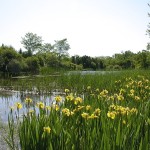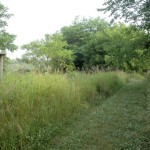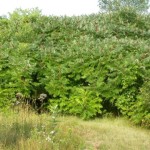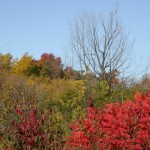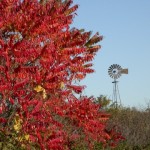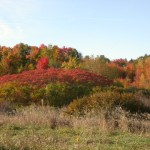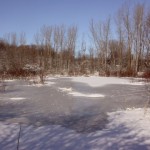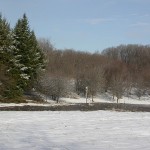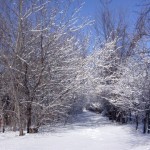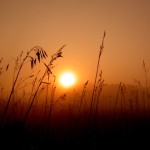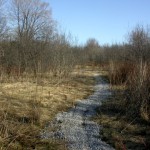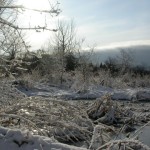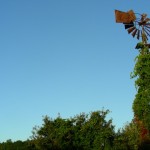The McGill Bird Observatory is located on the 22 hectare Stoneycroft Wildlife Area in Ste-Anne-de-Bellevue, Quebec, at the western tip of the island of Montreal. Stoneycroft is adjacent to the Morgan Arboretum, the largest arboretum in Canada, covering 245 hectares.
An internal report (Bardo, L., L. Goulet, A. Hibbert, V. Lukasik and K. Poitras. 2003. Ecological assessment of the Stoneycroft Wildlife Area. Internal Report, Dept. of Natural Resource Sciences. 50 pp.) documented over 240 species of plants, over 130 vertebrate species and a very large insect population at Stoneycroft. The habitat is a patchwork of different vegetation types comprising shrubland, mature deciduous forest, hawthorn tracts, sumac stands, and remnants of an apple orchard.
It is designated as a McGill Research Station, and as such there is no public access, except within the context of special events or research programs. This area provides a variety of attractive habitat for migrating birds as well as a sheltered and safe location for equipment.
History:
Between 1995 and 2003, McGill University ornithology students and various adult wildlife workshops utilized a section of the Stoneycroft Wildlife Area for occasional banding activities in both spring and fall. Although efforts were quite limited over the 9-year period, a total of 247 birds comprising 34 species were caught, suggesting that this area could be productive as a migration monitoring site. Though no owl banding was attempted during that period, the habitat suggested that the site also has considerable potential for it.
In August 2004, volunteers restored an old cabin on the Stoneycroft property, which is now used as the McGill Bird Observatory banding station. Ten passerine nets comprising five groups were set up for the fall 2004 season, plus a separate cluster of six nets for Saw-whet Owl migration monitoring. This network was expanded for the spring 2005 season, and has been only slightly modified since then.
A census route was established in 2004 that provides access to the various habitats around the property. During fall and spring migration, the census is walked daily to ensure a comprehensive overview of the birds present. It also provides a good way to get an overview of the species in the area during the off-seasons in winter and summer.
Below are some photographs of our site:
If you click on any of the thumbnail images below, you will open a full size gallery/slideshow:

